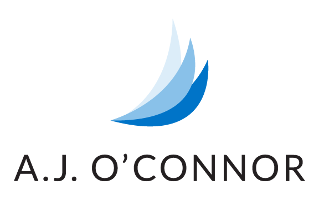
Learning Agility – A 2020 Leadership Competency
During an A.J. O’Connor Associates (AJO) facilitated a session for leaders in the hospitality industry, learning agility was rated last in our ten 2020 leadership competencies in terms of perceived importance and leadership development needs. Executive coach and author Marshall Goldsmith conceded that learning agility was overlooked in his 2008 research on how future leader competencies are different from yesterday. Learning agility is one of the ten Leader 2020 competencies identified by AJO and arguably, it is more important than ever as leadership roles become more complex in the dynamic, uncertain and global business environments in which we operate today.
This competency may be overlooked by leaders and experts alike, especially when you consider that:
- Learning agility correlates significantly with long‐term potential for promotion and staying out of trouble. Lombardo & Eichinger (2000)
- The difference between successful people and those whose careers falter…is their ability to wrest meaning from experience. McCall, Lombardo, & Morrison (1988)
- “…one of the most reliable indicators and predictors of true leadership is an individual’s ability to find meaning in negative events and to learn from even the most trying circumstances.” Bennis & Thomas (2002)
What is Learning Agility?
Academics and practitioners disagree on a definition of learning agility, including how it differs from learning ability. Learning agility has been defined by De Meuse et al. (2010) as:
“the willingness and ability to learn from experience, and subsequently, apply that learning to perform successfully under new or first-time conditions.”
Scott DeRue et al (2012) propose a much narrower definition. They emphasize speed and flexibility of learning and propose a model which includes personal attributes they believe to be associated with learning agility (goal orientation, cognitive/meta cognitive ability, and openness to experience).
At the practitioner level, three firms have participated in and/or applied the research to models and definitions they offer. To compare and contrast the models, we’ve mapped the characteristics of each model in the table below.
- The Center for Creative Leadership’s (CCL) white paper entitled Learning About Learning Agility proposes that learning-agile individuals practice disciplined personal development in five key ways. The first four facets enable one’s learning agility and the fifth frustrates or impedes it.
- Korn/Ferry’s Lominger identifies five factors of learning agility (based on the work of Lombardo & Eichinger) in a presentation entitled, Learning Agility: A New Construct Whose Time Has Come.
- Consulting and training firm ChangeWise prefer the term leadership agility which they argue goes beyond learning agility.
While there is disagreement on a definition for learning agility, there appears to be consensus when it comes to many of the factors used to measure it. In all three models shown in the table above, agile learners:
- Engage in self-reflection; display self-awareness; seek feedback and try new behaviors
- Are creative problem solvers who display curiosity and like to experiment. They are open to change and challenge the status quo
- Take risks; can tolerate ambiguity and complexity, and remain resilient through adversity
How do you assess Learning Agility?
Each consulting organization whose model is shown above offers its own proprietary assessment to measure learning/leadership agility. These are targeted at learning and development practitioners:
- Learning Agility Assessment Inventory (LAAI) developed by the research team at Teachers College, Columbia University measures the five main facets of learning-agile behavior shown in the table above. This research is being performed in collaboration with the Center for Creative Leadership.
- Korn/Ferry’s Lominger offers three different levels of learning agility assessment. This includes a 30-minute self-assessment, the Choices Architect® multi rater assessment and an interview protocol process. The five dimensions of their model are shown in the table above. The fifth dimension (self-awareness) was more recently added to the original four.
- Changewise Leadership Agility 360. The Leadership Agility 360 assesses a manager’s level of agility in three distinct action contexts (leading organizational change, improving team performance and engaging in pivotal conversations) and at three distinct levels of agility (Expert, Achiever, and Catalyst). (Note: AJO is now certified to use this 360 and would be happy to discuss its applicability to your organization’s needs.)
- See our April 2016 post where we cover two new learning agility assessments now available.
For individuals interested in measuring their learning agility, we recommend several excellent resources:
- Are You Increasing Your Learning Agility — Or Are You Missing Out? Take this short quiz from strategy+business to find out if you are seeking opportunities to grow.
- FYI™ for Insight Self-Awareness Assessment This three-step assessment provides insight into strengths and weaknesses that can help you get what you want from your career. View your results online which will show you the “21 leadership characteristics for success” and the “Five that get you fired!” Each characteristic is explained in terms of what skilled and unskilled on this dimension looks like. Further development resources/reading are also offered for each characteristic.
- The following questions are drawn from the CCL’s framework (shown in the table above). You can click on this image to access the white paper from which this chart was taken.
How do you develop Learning Agility?
While some personality traits associated with agile learning are stable over time, experts all agree that many behaviors can be developed.
For leaders who wish to learn more, CCL offers tips (see page 10) for improving learning agility in which they introduce their framework for understanding learning agility, as well as insights and tactics on how to use it to increase your own learning agility. Their white paper is also an excellent read, offering tips and suggestions for becoming more learning agile. In particular, pages 11-12 offer development activities and personal challenges under each of the five factors. A great resource!
Lominger offers resources for individuals and organizations, including assessment tools. ChangeWise offers several resources, including a book, white paper, free power style assessment, blog, and LinkedIn Group.
Finally, Bersin has recently made the case for greater agility at the organizational level. According to Bersin’s research, high-performing organizations demonstrate agility in two ways:
- They deliver L&D programs which encourage and foster agility
- Their L&D organizations themselves are agile
Conclusion
While the definition and measurement of this competency undergo further refinement, it is clear that the case for building learning agility is not in dispute. As CCL concludes,
“Although our understanding of learning agility is growing, research is still in its infancy and there is much work to be done. It is imperative that we continue to evolve our understanding of the concept and seek better clarity around what learning agility is, how it can be measured, and what learning-agile individuals do that differentiates them from others. Ultimately, this work will help practitioners better assess, select, and develop high-potential talent within their organizations. And through a better understanding of learning-agile behavior, individuals can unleash their own leadership potential.”
AJO’s Recommended Reading & Resources
Books
- Goldsmith, M., & Reiter, M. (2007) What Got You Here Won’t Get You There: How Successful People Become Even More Successful. Hyperion Books.
- Joiner, W.B., & Josephs, S.A. (2006) Leadership Agility: Five Levels of Mastery for Anticipating and Initiating Change. Jossey-Bass.
- McCall, W., Lombardo. M.M., & Morrison, A.M. (1988) The Lessons of Experience: How Successful Executives Develop on the Job. The Free Press.
- Swisher, V. (2012) Becoming An Agile Leader. Lominger International: A Korn/Ferry Company.
Research, Articles & Whitepapers
- DeMeuse, K.P. (2008) Learning Agility: A New Construct Whose Time Has Come. Lominger International: A Korn/Ferry Company.
- DeRue, D.S., Ashford, S.J., & Myers, C.G. (2012) Learning Agility: In Search of Conceptual Clarity and Theoretical Grounding. Industrial and Organizational Psychology. Volume 5, Issue 3, September 2012, Pages: 258–279.
- Doyle, C., & Moye. N. Ph.D. (2010) Learning Agility: The Leadership Skill for a Moving Target. IRMI.
- Joiner, W.B. (2012) How to Build An Agile Leader. Chief Learning Officer.
- Mitchinson, A. & Morris, R. Ph.D. (2012) Learning About Learning Agility. Center for Creative Leadership.
Watch
- How is the role of leader changing? Marshall Goldsmith addresses the question of how the leader of future is different than today?
- How does Learning Agility predict who will succeed in leadership roles? Vicki Swisher at Korn/Ferry International speaks with The Korn/Ferry Institute about how learning agility can help predict who will succeed in leadership roles.
- Learning Agility: The X-Factor in Identifying and Developing Future Leaders Vicki Swisher, Senior Director — IP Research and Development, discusses Learning Agility and its importance in identifying and developing high potential talent.
- Lominger International: A Korn/Ferry Co. (2010) FYI for Learning Agility™ This guide was designed for any motivated person seeking to develop skills that lead to increased learning agility, referring to the ability to perform well under first-time, challenging conditions.
- ChangeWise offers several resources, including a book, white paper, free power style self-assessment, blog and LinkedIn Group.

